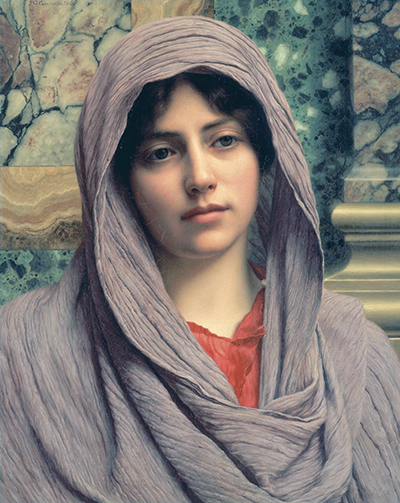Painters have found different reasons for painting this include interest in religion, some are have shown interest in money, while others are interested in me women and flowers.
Numerous artists have drawn various paintings of what interests them the most. An example of such a painter is John William who was a protege of the infamous painter Lawrence Alma. John William was interested in carving out ladies and flowers. Once such painting of his is the Lycinna painting that was done in 1918. The painting is about a woman's portrait. The woman who is believed to be of the Roman origin. In as much as the painting focuses mostly on an individual character, the piece involves a lot that can be concluded and narrated from. The woman on the painting is seen to be gazing at something though it is unclear of what it is. She is also dressed in a headscarf that is almost pink in colour. The scarf covers most of her visible body in the painting. This is a sign that she was either married or yet to be married off.
A lot of the painting is concerned with communication through body gesture that is displayed by the woman. For instance, when you look at the picture, we can notice that the ladies head is tilted to your right a clear indication that she was interested in something. Many theories have been developed to comprehend the womans body gesture with the most efficient being that the woman was interested in mostly the artist and how he conducted his work.
From the Lycinna painting by John William Godward, the artist goes on to tell us more about the environment in which the lady is in. The walls are ceramic in nature which defines that the lady could be from a noble family or a definitely well off family. Details concerning the painting are that the painting has dimensions of 50 by 40 cm and that it is canvas and oily in nature. The picture is said to be a private collection of an unknown individual.




